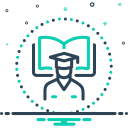
AI in STEM Education Tools
The integration of artificial intelligence in STEM (Science, Technology, Engineering, and Mathematics) education tools is reshaping how students and educators approach the learning process. AI-powered solutions are increasingly being used to create personalized, interactive, and highly engaging learning experiences, making complex concepts more accessible and improving educational outcomes. By leveraging adaptive technologies, educators can tailor instruction to meet individual needs, while students benefit from instantaneous feedback and a more intuitive understanding of difficult topics. As AI continues to evolve, its transformative impact on STEM education is only expected to grow, opening new possibilities for innovation, accessibility, and effective learning.
Adaptive Curriculum Design
Real-Time Feedback and Assessment
Enhancing Accessibility and Inclusion

